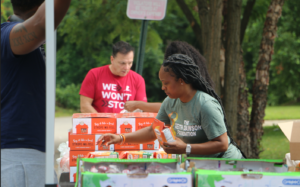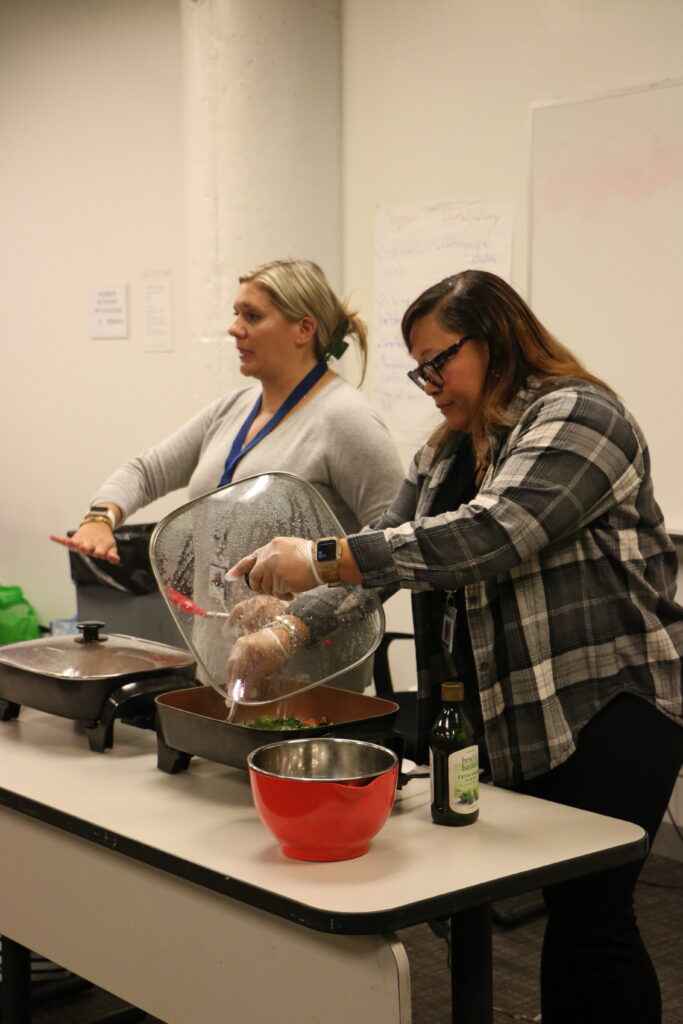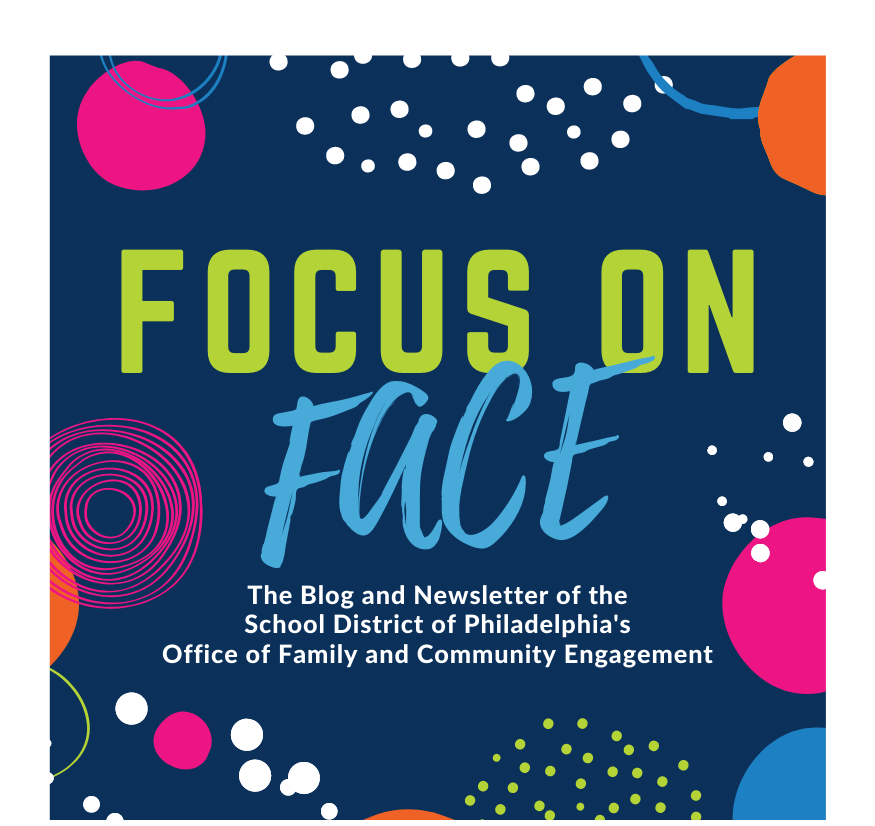
Lauren Nocito and Teisha Cavanaugh from Eat Right Philly spoke with Focus on FACE as we explore the issue of food insecurity. In this interview, we discussed what puts families at risk and the measures being taken by the District and Eat Right Philly to address this pressing issue within our school communities.
FACE: Please start off by introducing yourselves and your roles at Eat Right Philly
Lauren: I’m Lauren Nocito. My title is Director of Nutrition Education. Our program office sits within the Office of Curriculum and Instruction so we work very closely with Health and P.E. A lot of our work is nutrition education focused but with the high need we see with families across the District…we have gone in the direction to help address food insecurity issues. We know it is a part of nutrition too. If you don’t have access to food, it is hard to eat healthy.
Teisha: My name is Teisha Cavanaugh and I am a Program Coordinator with the School District’s Eat Right Philly team. I primarily focus on food access work throughout the District. We base a lot of our work off our annual District-wide survey feedback. We see the data, we see the numbers from what our caregivers and guardians are reporting as far as food insecurity. We look at schools who are in high need and match them with programs that help to combat food insecurity within their school communities…Another area of my work is working with Farm to School. It connects our students to farms so they can actually see and experience where food comes from, not just learning about healthy food.
Lauren: Our program is federally funded through SNAP-Ed, which is Supplemental Nutrition Assistance Program Education. The easy way to put it is [SNAP-Ed] is the education arm of SNAP benefits. Our goal is to help families make the best use of their SNAP benefits through healthy food choices at the grocery store and to promote a physically active lifestyle.
FACE: What is food insecurity and what makes families at risk for food insecurity?
Teisha: Food insecurity is a limited or an uncertain availability of nutritionally adequate, healthy, and safe foods on a regular basis. It is also the ability to acquire these foods in socially acceptable ways. We often talk about food insecurity but we have to look at the whole food system.
Lauren: I think a lot of challenges that family members, caregivers, and a lot of residents of Philadelphia have are multifaceted. If you have one challenge, you more than likely have many other challenges as well. It stems from poverty, homelessness, joblessness, low wages, etc. When we look at structural racism, it has historically put people at risk for poverty and food insecurity. We address this at our foundation with the District’s strategic plan. You cannot have a child learning math and reading when they are coming to school hungry, in poor housing or any of the other challenges that our students face. Families are faced with, “Do I pay my rent or do I pay for food? Do I go to the food pantry down the street where I can get free food in order to pay my electric bill?” At our food distributions, yes, we want to distribute food and fresh produce but we are hoping that we can bring other supports to families from our external partners一 whether they need help with paying bills or legal support.
FACE: How can education and awareness combat food insecurity?
Teisha: Giving our participants a voice is important. Letting them know we hear them. We kind of have to take it back to the basics. We have to meet our participants一 our students, our families一 where they are. I feel that is the first part of really moving this work forward. Once we can engage with our families in this discussion and bridge that gap, it puts the School District in a position where we can now be seen as a place where families want to come to get resources. They want to voice what is happening in their communities. They want to know that we are with them. Making this work family centric and student centric is important. Once we get the word out about food insecurity, we can say “Hey, this is what food insecurity is and if you are experiencing it, we are here to help you”
Lauren: There are a lot of neighborhoods in the city that don’t have many food shopping options. There is a lot of fast food and a lot of the foods you would consider less healthy and nutrient dense. In our school distributions, we include fresh produce to make it easily accessible and free. That helps to supplement other food you are bringing home to your families. With the education side of it, it is exposure as well. What we have been trying to include more of in our work is thinking about the families we serve and their cultures. There are fruits and vegetables in every culture. We want people to eat what is good for them, their bodies, their families, their cultures, and their religions but also being able to make them fruits and vegetables when you can!
Teisha: Everyone has a story with food. We all can connect to food in some way. That connection to food is important to respect. Having the cultural humility to understand that and to value the voices of our families and students is important. We do caregiver workshops on eating healthy on a budget. We do demonstrations for nice, healthy snacks that our students actually enjoy! We have to reinvent the way we approach healthy eating and bring it to the 21st century. We have to make it culturally relevant to our families in the District.
Thank you to Eat Right Philly for speaking with us and discussing this topic of food insecurity!
Visit Eat Right Philly’s website at www.philasd.org/curriculum/#nutrition to find programming for students and resources for families, staff, and community members. For any questions and concerns, email nutrition@philasd.org. If you are looking for food in the city, visit www.phila.gov/food/ to find a food pantry near you!![]()
![]()


